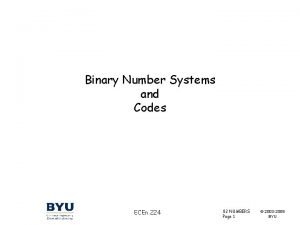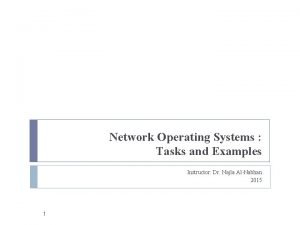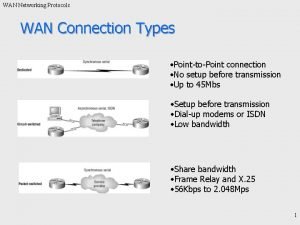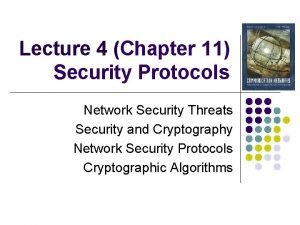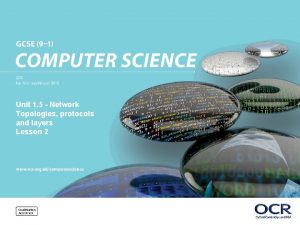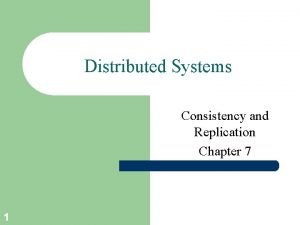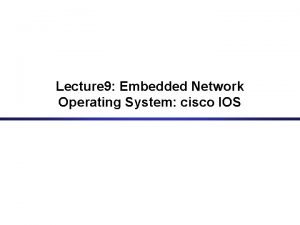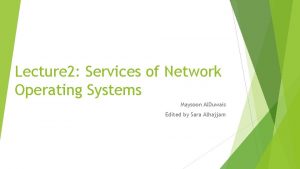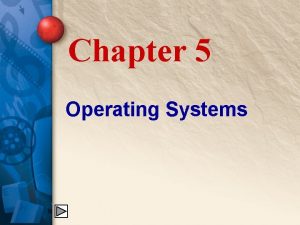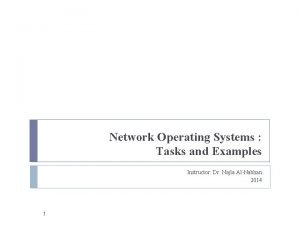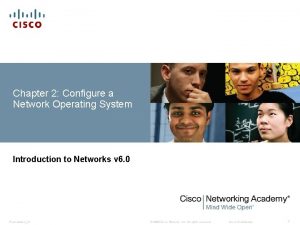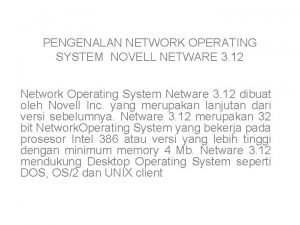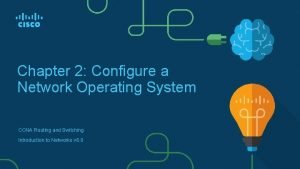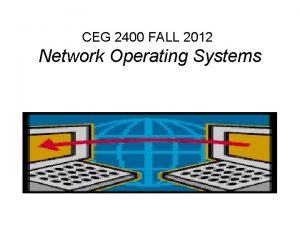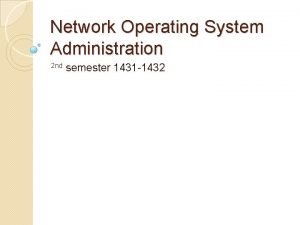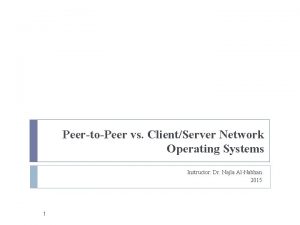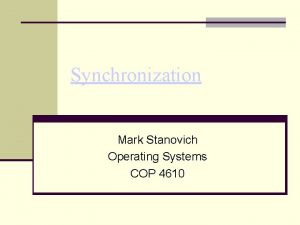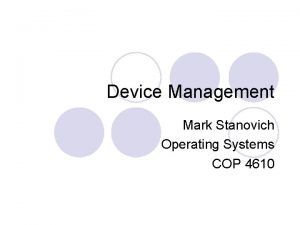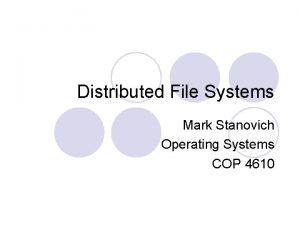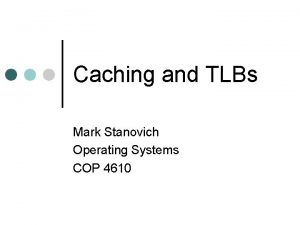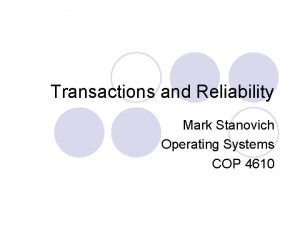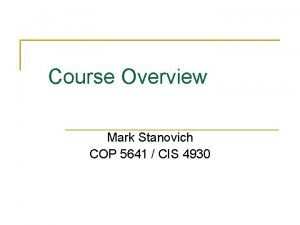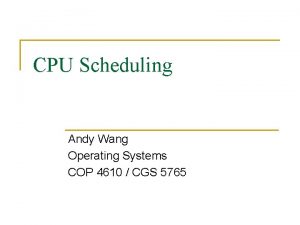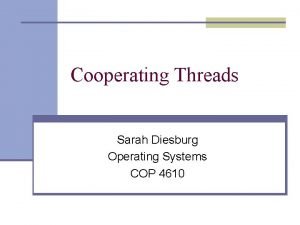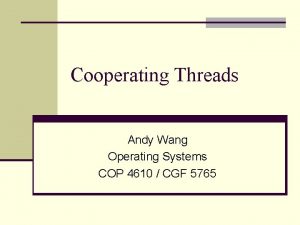Network Protocols Mark Stanovich Operating Systems COP 4610



























- Slides: 27

Network Protocols Mark Stanovich Operating Systems COP 4610

Protocol • An agreement between two parties as to how information is to be transmitted • A network protocol abstracts packets into messages

Physical Reality vs. Abstraction Physical reality: packets Abstraction: messages Limited size Arbitrary size Unordered Ordered Unreliable Reliable Machine-to-machine Process-to-process Only on local area network Routed anywhere Asynchronous Synchronous Insecure Secure

Physical Reality vs. Abstraction Physical reality: packets Abstraction: messages Limited size Arbitrary size Unordered Ordered Unreliable Reliable Machine-to-machine Process-to-process Only on local area network Routed anywhere Asynchronous Synchronous Insecure Secure

Arbitrary-Size Messages • Can be built on top of limited-size ones – By splitting a message into fix-sized packets • Checksum can be computed on each fragment or the whole message

Internet Protocol (IP) • Provides unreliable, unordered, machine-tomachine transmission of arbitrary-size messages

Process-to-Process Communications • Built on top of machine-to-machine communications through the use of addresses • Each message contains the destination address to talk to the correct machine

User Datagram Protocol (UDP) • Provides unreliable, unordered, user-to-user communication • Built on the top of IP • Generally lower latency at the cost of reliability • Sometimes referred to as Unreliable Datagram Protocol

Ordered Messages • Built on top of unordered ones • Use sequence numbers to indicate the order of arrival – Specific to a connection • If packet 3 arrives before packet 2, wait for packet 2. • Always deliver packets in order, to user applications

Reliable Message Delivery • Built on top of unreliable delivery • Problem: Network infrastructure can garble messages – Packets can be dropped if network buffers are full

Solution • Checksum each message • At a receiver, discard messages with mismatching checksums • A receiver acknowledges if a packet is received properly • A sender resends the same message after not hearing the acknowledgment for some time (a timeout period)

A Minor Problem • A sender may send twice, if the first acknowledge is lost • The receiver needs to discard duplicate packets

Implications • A sender needs to buffer messages that are not yet acknowledged • The receiver must track messages that could be duplicates

Transmission Control Protocol (TCP) • Provides a reliable byte stream between two processes on different machines over the Internet sequence number: 1 checksum: fa 73 cd 10

Transmission Control Protocol • Fragments the byte stream into packets and hands them to IP

TCP Message Categories • Sender – Sent and acknowledged – Sent and not acknowledged – Not yet sent • Receiver – Forwarded to application – Received and buffered – Not yet received

More on the Sequence Number • Need a way to recycle sequence numbers – Each TCP packet has a time-to-live field • If the packet is not delivered in X seconds – The packet is dropped – Sequence numbers can be reused – An epoch number used to identify which set of sequence numbers is being used • Incremented at each boot • Stored on disk

Congestion • Implications of timeout period at a sender – Too long unnecessary waiting – Too short a message is transmitted when an acknowledgement is in transit • Network congestion delayed acknowledgement timeout data retransmission more congestion

TCP Solution • Slow start: TCP starts by sending a small amount of data – If no timeout, more data is sent – If timeout, TCP reduces the amount of data being sent

The Two Generals’ Problem • Two generals are on the tops of two mountains… – They communicate only through messengers… • They need to coordinate the attack… – If they attack at the same time, they win… – If they attack at different times, they will…die…

The Two Generals’ Problem • Question: can they guarantee a synchronized attack?

The Two Generals’ Problem Illustrated General X 11 am OK? General Y 11 am sounds good So, 11 am it is. Yeah, what if you don’t get this ack?

The Two Generals’ Problem Over an unreliable network, we cannot guarantee that two computers will coordinate an action

Distributed Transaction • Multiple machines agree to do something atomically, but not necessarily at exactly the same time • Mechanism: two-phase commit

Two-Phase Commit Account X Account Y Phase 1: ask if each can commit 1. Begin transaction Ask Y for $1 Enough cash 2. Write “Y = Y - $1” Ready to commit Phase 2: commit 3. Write “X = X + $1” 4. Commit Ask Y to commit 5. Commit

Scenarios • If Y crashes between 1 and 2 – Y will wake up and do nothing – X will timeout and abort the transaction • If X crashes before step 4 – X will wake up and abort the transaction • If X crashes between 4 and 5 – Y will timeout and ask X for the transaction status

Scenarios • If Y crashes between 2 and 5 – Y will wake up and check the log – When X sends Y the commit message, Y will commit – Y can also timeout and ask X the current status
 Good cop bad cop interrogation
Good cop bad cop interrogation Cop 1 cop 2
Cop 1 cop 2 What is 224 in binary
What is 224 in binary Network operating system example
Network operating system example Type
Type Network security protocols
Network security protocols Playfair cipher
Playfair cipher Wireless sensor network protocols
Wireless sensor network protocols Whats my ip
Whats my ip Network communication protocols map
Network communication protocols map Chapter 3 network protocols and communications
Chapter 3 network protocols and communications Distributed data store
Distributed data store Ece 526
Ece 526 Network operating system examples
Network operating system examples Networking background
Networking background Cisco router operating system
Cisco router operating system Different types of network operating system
Different types of network operating system Types of nos
Types of nos Network operating system examples
Network operating system examples Configure a network operating system
Configure a network operating system Pengenalan network operating system
Pengenalan network operating system Configuring a network operating system
Configuring a network operating system Characteristics of network operating system
Characteristics of network operating system Medium berwayar
Medium berwayar Network operating system administration
Network operating system administration System.net.peertopeer
System.net.peertopeer Operating system example
Operating system example Evolution of operating systems
Evolution of operating systems


